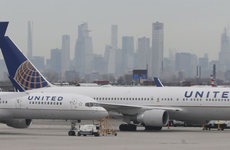Credit card originations continue at record-setting pace, even as sign-up bonuses dip

The Bankrate promise
At Bankrate we strive to help you make smarter financial decisions. While we adhere to strict , this post may contain references to products from our partners. Here's an explanation for . The content on this page is accurate as of the posting date; however, some of the offers mentioned may have expired. Terms apply to the offers listed on this page. Any opinions, analyses, reviews or recommendations expressed in this article are those of the author’s alone, and have not been reviewed, approved or otherwise endorsed by any card issuer.
Americans are opening more credit card accounts than ever before. There have only been seven months in history with more than 6.5 million U.S. credit card originations, and six of them are the six most recent months reported by Equifax (May through October 2021).
The only other was August 2019, when 6.7 million accounts were opened. The 2021 surge included these monthly totals:
- May 2021: 6.6 million credit card originations
- June 2021: 6.93 million
- July 2021: 6.85 million
- August 2021: 6.79 million
- September 2021: 6.53 million
- October 2021: 6.64 million
Compared with January through October 2020, credit card originations in the first 10 months of 2021 were up a staggering 46 percent. Obviously, the 2020 figure was held in check by the tremendous uncertainty that dominated the early stages of the COVID-19 pandemic. Lenders were nervous, and that year ended up with the fewest new bank-issued credit card accounts since 2013.
Still, originations in the first 10 months of 2021 were 4.6 percent above the 2019 level, which was the previous high-water mark for any year on record. And growth accelerated as the year progressed. From May through October 2021, originations were up about 12 percent versus the same period in 2019.
Lenders’ worst fears were not realized
The expected surge in delinquencies and defaults never came in 2020 or 2021—thanks in large part to government aid such as stimulus payments and expanded unemployment benefits—so lenders steadily loosened their credit standards as 2021 progressed. Last summer included an especially robust set of introductory bonuses, too.
At the time, many thought the pandemic was coming to an end, thanks to widespread vaccine availability and a sharp drop in COVID cases. The competition was particularly intense on travel credit cards. Card issuers sought to capitalize on Americans’ desires to emerge from lockdowns, reconnect with family and friends and check destinations off their bucket lists.
Popular travel cards such as The Platinum Card® from American Express, the Chase Sapphire Preferred® Card, the Capital One Venture Rewards Credit Card and the Citi Premier® Card all dangled record-high sign-up bonuses in front of travel-starved consumers.
Not to be left out, the cash back category roared back to life as well with the debut of compelling cards such as the Wells Fargo Active Cash® Card (earns cash rewards) and the Citi Custom Cash℠ Card.
Even the previously sleepy 0 percent balance transfer space rebounded with interest-free terms lasting as long as 21 months.
COVID isn’t gone, but things seem to be getting better
Sadly, the pandemic wasn’t over in mid-2021, but demand for credit cards remained strong. While the Delta and Omicron variants led to dramatic increases in COVID cases during the fall and winter of 2021 and 2022, each successive wave seems to have had a less significant effect on Americans’ finances.
Delinquencies and defaults on credit cards and other financial products have remained very low, the unemployment rate is way down and the economy has been growing at a solid pace. Card issuers seem to be feeling good about the current state of affairs. In fact, their biggest complaint appears to be that too many cardholders are paying down their balances (although that trend has begun to reverse, which is more profitable for banks and less desirable for consumers).
Sign-up bonuses aren’t quite as lofty now as they were last summer and fall, but they’re still good. Demand for new credit cards has remained high, and virus cases have dropped significantly.
Are we entering a second Roaring Twenties?
While we don’t know for sure if Omicron is the last big wave of the pandemic, we have more tools to fight the virus than ever before. Plus, the populace has grown even wearier of COVID restrictions. There’s tremendous pent-up demand to re-engage in activities such as travel, dining and attending concerts and sporting events.
There’s ample data to support the optimistic theory that we’re about to embark upon a second “Roaring Twenties.” For example, Bank of America says its credit card customers spent 28 percent more in January 2022 than they did one year prior. Goods sales have been remarkably strong throughout the pandemic, but spending on services has been weaker.
It seems that an increase in service purchases is likely as more people feel comfortable leaving their homes. And traditionally, Americans have been more apt to put travel, dining and other discretionary expenses on credit cards, often opting for cash and debit cards for everyday essentials such as groceries and gas.
The bottom line
As your lifestyle and the marketplace continue to evolve, it’s a good time to revisit your credit cards.
Anyone with credit card debt should prioritize their interest rate, especially with rates likely to rise from their already hefty average of 16.28 percent. A 0 percent balance transfer card could save you a ton of money if you carry a balance from month to month.
If a big trip is in your future, you can defray some of those costs with a new travel card. On the other hand, cash back offers universal appeal.
Card issuers are competing aggressively for your business, so take advantage by signing up for a new card with a low interest rate, an attractive sign-up bonus or compelling ongoing rewards.
Have a question about credit cards? E-mail me at ted.rossman@bankrate.com and I’d be happy to help.
Related Articles



Record-high bonuses mean it’s an excellent time to sign up for a travel credit card
